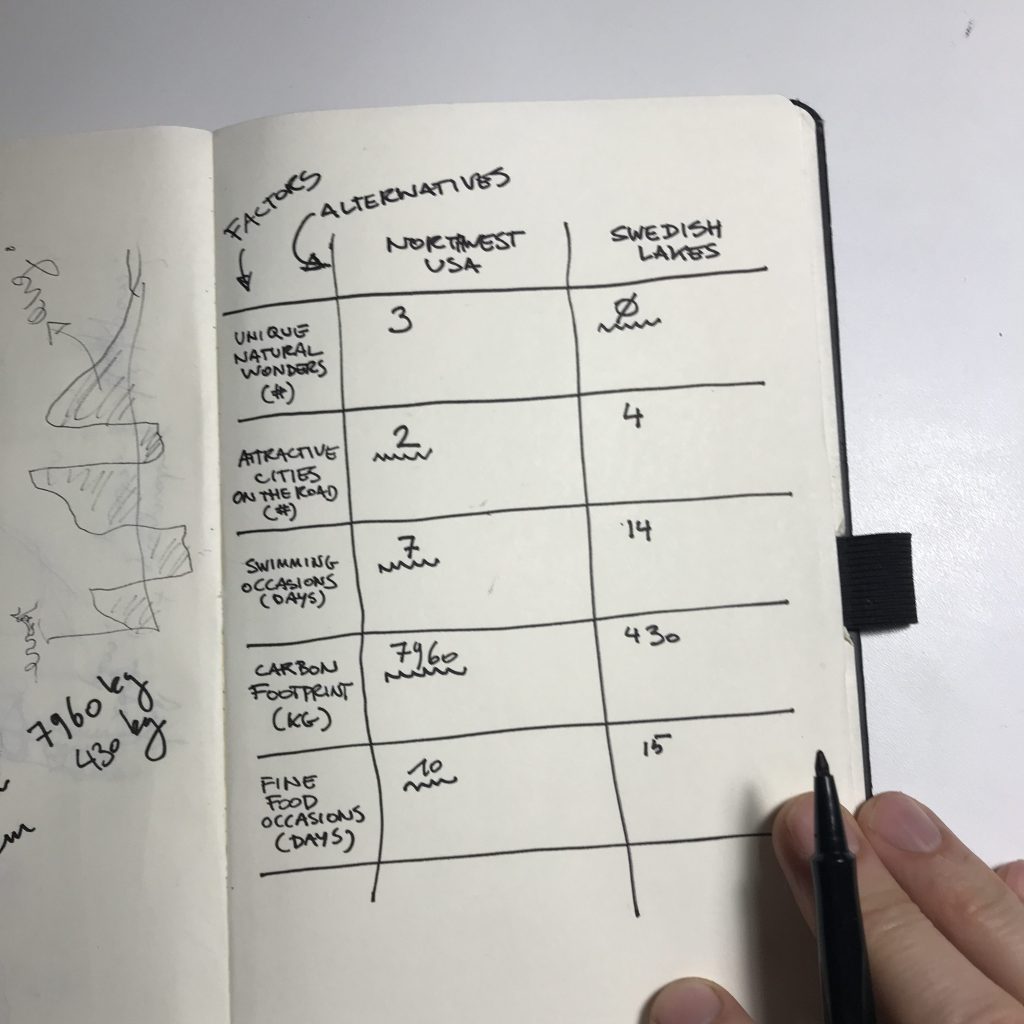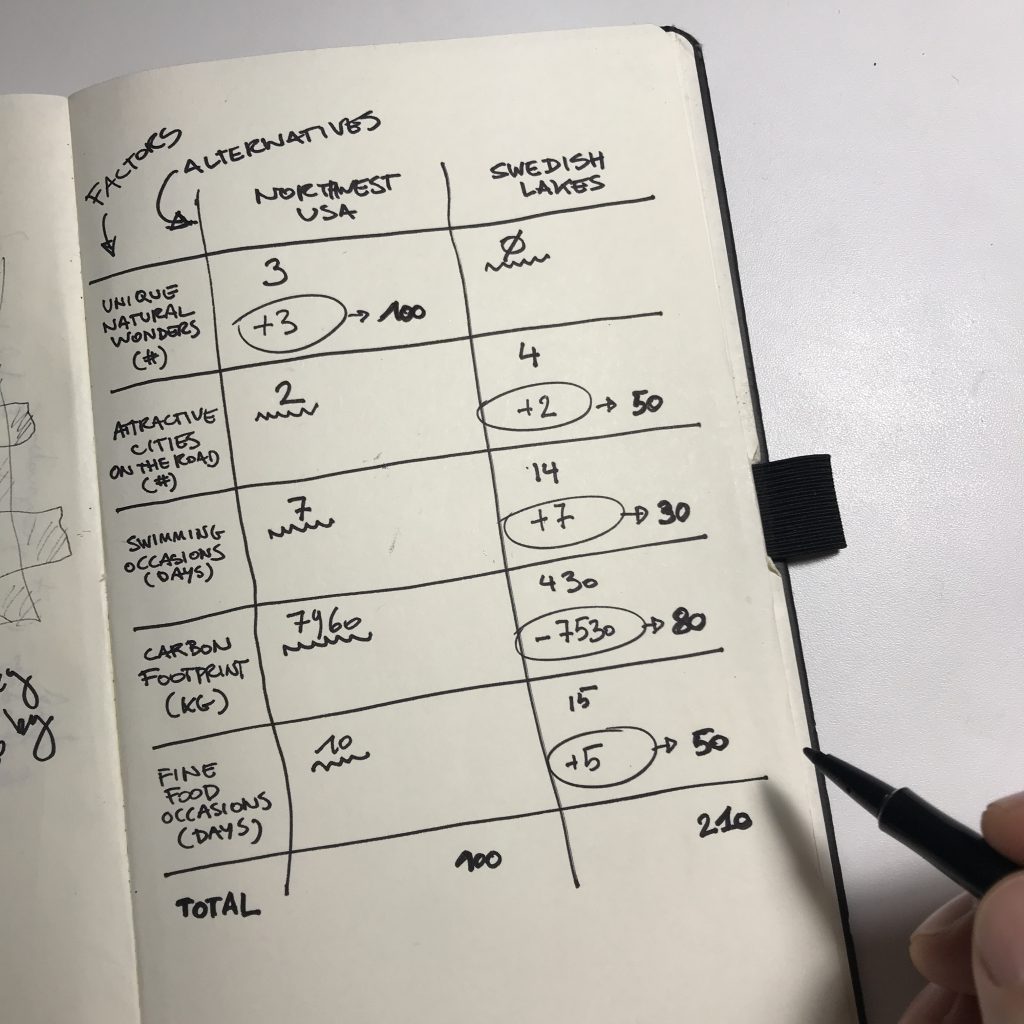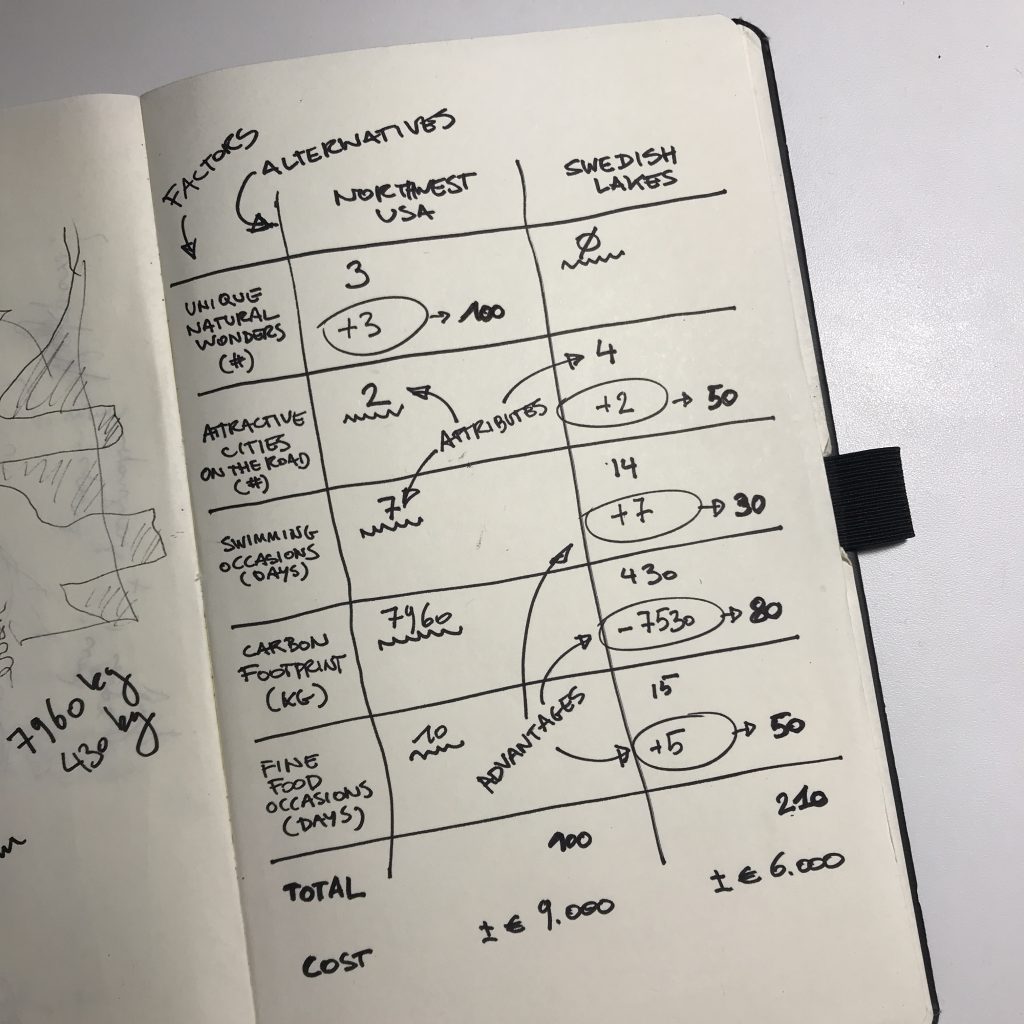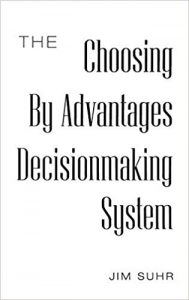I have seen many decision making methods. Of all of them, the Choosing By Advantages method by Jim Suhr stood out as the most effective and rational. Here’s a step by step guide.
Choosing by Advantages (CBA) is a decision-making system that acknowledges all decisions are subjective. It guides users however to collect, prioritize and compare facts before choosing.
Jim Suhr, the creator of Choosing by Advantages: “First, we teach people how to use correct data. Second, we teach them how to use data correctly.”
The basic idea of Choosing by Advantages
The basic idea is to look at differences between alternatives instead of weighing criteria. Classic choice methods use ‘positives’ and ‘negatives’. Every positive is a negative however, depending on the anchor you choose. CBA therefore advises to use clear anchors and compare the advantage of a difference.
CBA redefines some terms in decision making in a more precise way. Before I can explain Choosing by Advantages, we first need to be clear on those definitions.
- Alternatives: Things, plans or ideas from which you will be choosing one.
- Attributes: A property or consequence of an alternative. For instance: color, weight, estimated ROI, carbon footprint,…
- Advantage: The difference between the attributes of two alternatives. One of them is the anchor – usually the best alternative.
- Factor: An attribute that is important to the decision. You don’t factor in every attribute to a decision. That would be messy.
- Criterion: A filter to select alternatives that meet minimum requirements. Not used when comparing alternatives.
Example of Choosing by Advantages: my family’s summer holiday
Let’s look at an example here: choosing where to go on holiday with the family. We have to make a selection out of a couple of alternatives – considering my family doesn’t want to stay at home. The point here is that Choosing by Advantages facilitates the discussion with me and my stakeholders – that is: the rest of the family.
I kept the example relatively simple in order to be able to explain the method. The complete method has some extra bells and whistles to deal special cases.
Step 1: Select Alternatives
We have several criteria for the trip. The criteria we have for a holiday are:
- Wide open nature
- Different staying locations
- Some city trips
- Reasonably accessible for families
So no extreme mountain climbing. We came up with two trips that satisfied our criteria: a canoe trip in Sweden or a tour of the national parks in the north west of the USA. After the selection of the alternatives, the criteria are not helping us any further — they don’t make any difference anymore. So we move on.
Step 2: Decide on the factors
The next step is to select the deciding attributes of the trips – the factors. As factors my stakeholders and I considered:
- The number of unique natural wonders (like geysers, canyons and sequoia’s)
- The number of interesting cities on the trip
- The carbon footprint of the holiday
- Swimming possibilities
- The probability of there being great food to taste

Step 3: Gather data for attributes
The gathering of data can be math and research, like the calculation of the carbon footprint. However, it can also lead to interesting discussions between the stakeholders and a fruitful exchange of views. Take, for example, the Unique Natural Wonders. What counts as one? What doesn’t? We decided the Grand Canyon, Yellowstone Geyser and Sequoia’s counted, but lakes didn’t.

When all data have been found and decided on, it helps to underline the least preferable attributes. More isn’t always better!
Step 4: Calculate advantages
Now CBA starts to shine: we’re going to look at the differences between the alternatives. When they are numbers it’s simply a matter of calculation. When they are statements, it can be another comparative statement.

Step 5: Value advantages
We’re almost there. Now starts the difficult task of comparing the value of all advantages with each other. For this we start with the most important advantage and rate it 100. Next we discuss the comparative value of the advantages with the kids – our little stakeholders. They decided for instance that seeing one natural wonder was comparable to swimming and playing in the water for week.

After my family and I decided on the relative value of each advantage we could simply add up the scores.
Step 6: Decide with the budget in mind
The trip to Sweden is the clear winner here. But what about the money? Doesn’t cost of an alternative matter? My family doesn’t have a limitless holiday budget. Price however, is a special factor. That’s because money, like time, carries an opportunity cost. I can spend my time and money only once.

The trip to Sweden is not only the most advantageous, it weigh less on my budget too. Even if the US trip would have won, the price difference here means that it would not allow us to go skiing next winter. The whole holiday budget would be taken up. That would have led to another interesting discussion with my stakeholders: are these great US national parks also worth skipping a skiing holiday? I guess not.
Anyway, our choice is clear: we’re going to Sweden!
More resources about CBA
Rebecca Snelling’s excellent book “Choosing by Advantages” explains the principles well.
Here’s a video explainer, although it’s a little slow.

